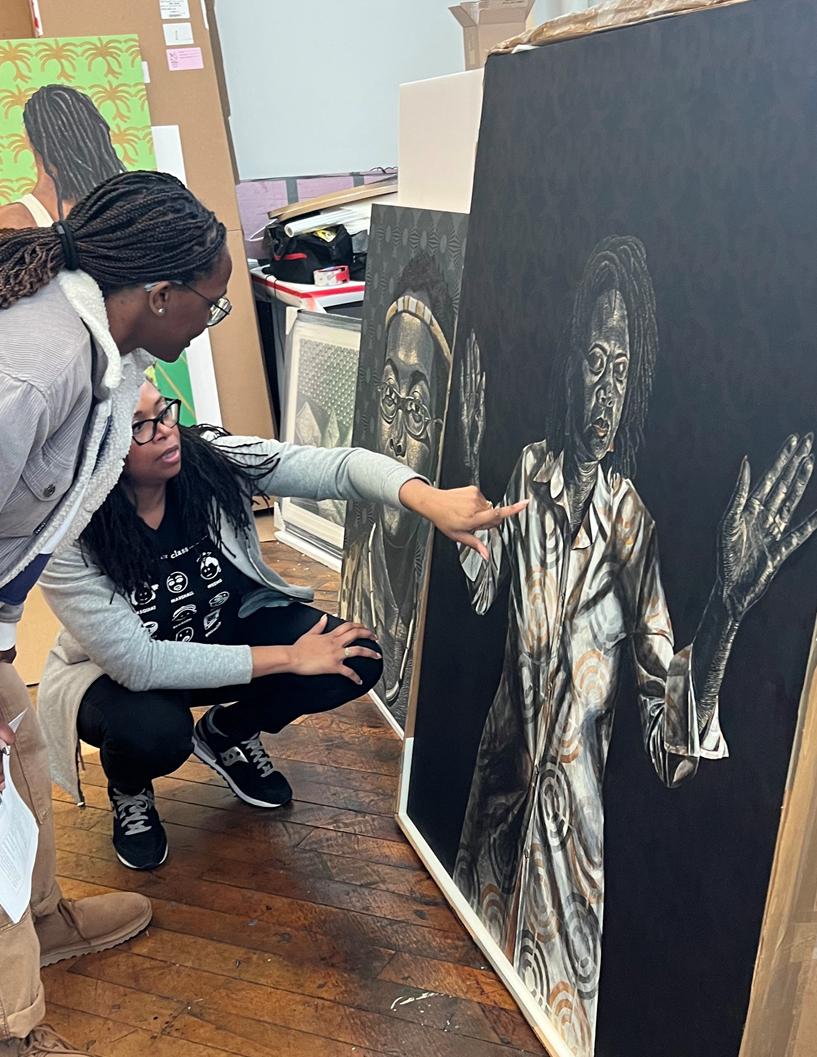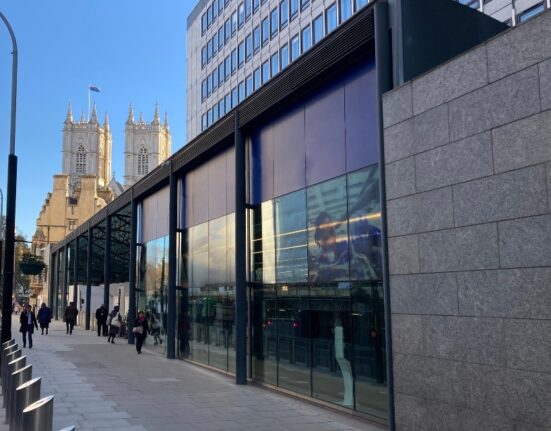Ask students about the bronze horseman perched upon the galloping stallion in Mudd Hall, and many will call to mind not only the statue’s title, Rumors of War, but also the horseman’s distinct hairstyle (dreadlocks) and attire (a hoodie and Nike tennis shoes).
“If you’ve had coffee in Mudd Hall, you’ve likely talked about the sculpture and perhaps gone on to read or learn about it,” said Maureen Marsh, senior vice president and secretary of the board of trustees at Johns Hopkins University. The 7-foot-tall equestrian statue by world-renowned artist Kehinde Wiley—an original smaller-scale version of his 27-foot bronze monument that now stands in Richmond, Virginia—is on long-term loan to the university from its owner Bill Miller, an investor, philanthropist, and JHU trustee.
“The statue brings people together and inspires conversation,” Marsh said. “It makes people stop and think.”
Now, the university has the opportunity to purchase and display new contemporary works of art on its campuses, positioned in places that both the public and the Johns Hopkins community can enjoy, gather around, think about, and discuss. In keeping with the aims of the university’s Diverse Names and Narratives Project, the goal is to select artists and artwork representing a broad range of perspectives, with many pieces created by local artists of burgeoning acclaim and reflecting some aspect of Baltimore.
“By bringing some of this art to Johns Hopkins University, the institution can serve as a local venue that showcases Baltimore art, while supporting artists as they grow and evolve in their careers.”
Cara Ober
Editor-in-chief and publisher, BmoreArt
A committee made up of faculty, staff, students, alumni, and trustee representatives will work in partnership with Cara Ober, the editor-in-chief and publisher of the independent art magazine BmoreArt, to identify and select artwork to buy and install on campus in 2024.
At the first committee meeting, Ober provided an overview of collecting art in Baltimore. Her story started with sisters Etta and Claribel Cone, who bought paintings and other art from Henri Matisse and Pablo Picasso in the early 20th century, before bequeathing more than 3,000 art objects to the Baltimore Museum of Art. Included in the BMA’s Cone Collection are 600 works by Matisse and 114 by Picasso, plus hundreds of prints, drawings, jewelry pieces, furniture pieces, books, and other items.
“For me, the most interesting and inspiring aspect of [the Cone sisters’] work is that they were not collecting famous artists at that time, and they were not collecting because they formed friendships with these artists,” Ober explained. “They were collecting artists they believed in … [and] saw value in, when others did not.”
Investing in and collecting art involves more than amassing material goods of high aesthetic—and financial—value, Ober indicated. “A lot of collectors are uncomfortable using the word ‘invest,’ but in my way of thinking, investing means giving artists resources because we value what they’re doing, and we’re giving them the opportunity to grow their practice and buy food,” she said.
The vibrant art scene, creative energy, and affordability of Baltimore make it an ideal place for ambitious, emerging artists to live and work. But Baltimore-based artists looking to make it in the international art world tend to exhibit their work outside of Charm City, booking shows instead in global art meccas like New York City, Los Angeles, Mexico City, London, Tokyo, Istanbul, Berlin, Paris, Hong Kong, Seoul, and Shanghai.
“By bringing some of this art to Johns Hopkins University, the institution can serve as a local venue that showcases Baltimore art, while supporting artists as they grow and evolve in their careers,” Ober said.
To lend diverse thoughts and opinions to the project, the selection committee consists of individuals with varied interests and experience.
Krieger School faculty are among the arts and culture scholars in the group, including Daniel Weiss, A&S (MA), ’92 (PhD), an art historian and Homewood Professor of the Humanities at Johns Hopkins, who previously served as the president and chief executive officer of the Metropolitan Museum of Art in New York; Mia Yinxing Liu, an assistant professor in the Department of the History of Art at Johns Hopkins, who specializes in modern and contemporary Chinese art and media culture; and Karen ní Mheallaigh, the Andrew W. Mellon Professor in the Humanities and chair of the Department of Classics at Johns Hopkins, whose work focuses on intersections between literature, art, and astronomy (among other sciences) in the ancient world.
“I’m interested in connections between art and science, and how art can help us get over our entrenched boundaries,” said ní Mheallaigh. “I’ve been thinking about these connections largely in disciplinary terms, and that’s why I’m here—I’m just really interested in how art can shift the way we think.”
Alicia Wilson, a university trustee, Baltimore native, and managing director and global head of philanthropy for the North American region for JPMorgan Chase, is also on the committee. “Art is such an important part of life, and I’m honored to join this exciting program focused on my hometown,” Wilson said.
For student committee members, the chance to learn about Baltimore art and influence the selection is exciting. “I’ve learned in my classes about the role of museums in society and how people question how museums should display art—and what art, in particular, should be displayed,” said Eric Smith, a committee member and sophomore majoring in international studies. “I look forward to exploring more on this committee.”
The committee is meeting throughout the fall and plans to make final selections by the end of this semester.






